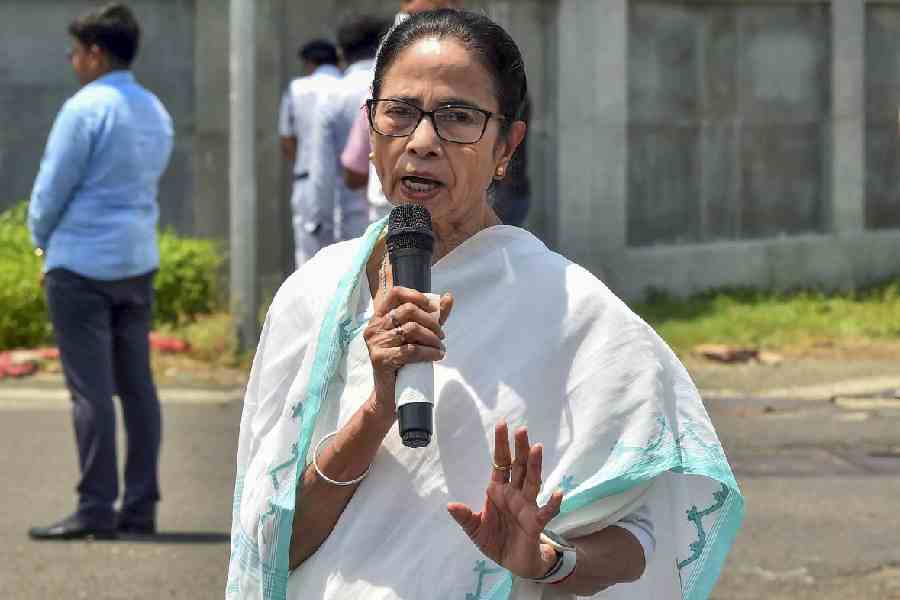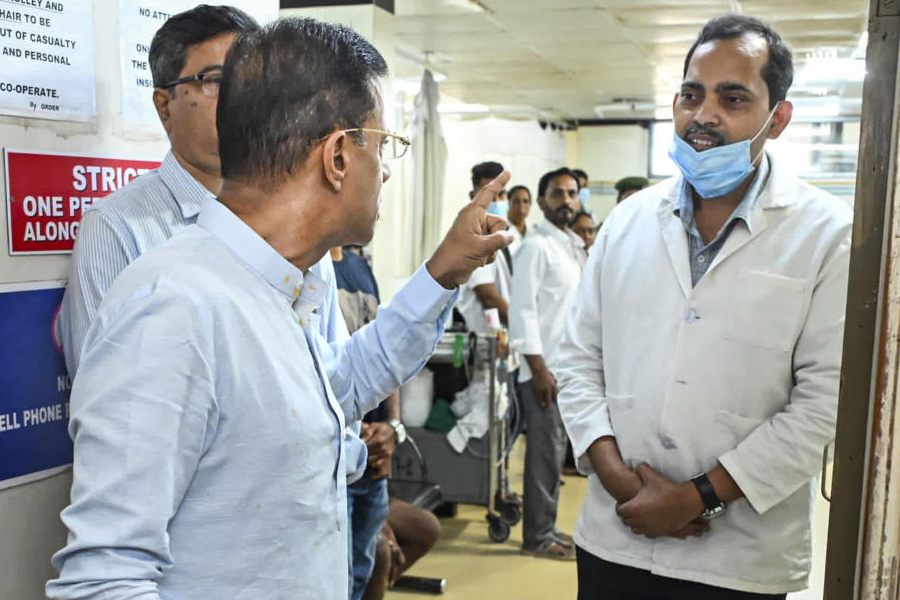
If you thought you saw the last of the Suryavanshis, the Nagas and the Vayuputras with the end of the Shiva Trilogy two years back, we have some great news for you. Amish’s new book, Scion of Ikshvaku (Westland Books, Rs 350), which hits stores on Monday, will have all that and much more but in a new story, set 1,500 years before Meluha. t2 received an advance copy of the first title in the Ram Chandra Series and found it a riveting read, written in Amish’s trademark simple style and full of twists and myths every few pages. On Friday morning, we caught up with the Mumbai-based author over phone.
Scion of Ikshvaku will be launched on Monday. How are you feeling?
You know, while I write I don’t feel nervous at all because while writing I genuinely don’t care about all this. In the marketing phase, I get nervous thinking whether people will like it, not like it…. So, at this point of time, yes I am nervous.
What is the main philosophy behind the Ram Chandra Series?
Yeah, you are right, all my books have a core philosophy. The discussion I am hoping to trigger in the Ram Chandra Series is, ‘What is an ideal society?’ Like in the Shiva Trilogy the core question was, ‘What is evil?’, in this series the core discussion is on what is an ideal society. And the answers aren’t simple.
It was good to meet the Nagas, the Vayuputras, there’s even a mention of Meluha....
Actually all my books are linked. All my books tell the tale of the Vedic people of our age, their high points and low points, over a 9,000-year period. So you can read the Ram Chandra Series, in a way, as a prequel to the Shiva Trilogy, because its events are set 1,500 years before the Shiva Trilogy.
And once I have written all the books that exist in my head, over a 20-25-year period, you’ll find that I have left clues for all of them in the Shiva Trilogy. Once I write, say the Mahabharata Series, seven-eight years later, come back to the Shiva Trilogy, I’ve left clues out there. Once I write, say the story of Lord Rudra and Lady Mohini, 13-14 years later, come back to the Shiva Trilogy, I’ve left clues out there. Once I write the story of Lord Parshu Ram, 17-18 years later, come back to the Shiva Trilogy, I’ve left clues out there. Once I write the story of Lord Manu, of Akhenaten… even 25 years later, come back to the Shiva Trilogy, I’ve left clues. In my mind they are all linked.
Wow! So you have your next 25 years planned out?
For the books yes, for the rest of my life, I don’t know. Because the next book could flop and I could be back at a banking job (laughs).
This time you were dealing with a story that everyone in India knows, that of the Ramayana. Was it more challenging to reinterpret a known epic than to write the relatively unknown story of Shiva?
Sorry, I beg to differ, people know the story of Lord Shiva. Come on, he’s one of our most popular gods! As far as writing is concerned, I follow the story the way it comes to me. I believe it’s a blessing… if one writes that way, it’s the easiest thing to do in the world, na? Because then I am not the creator, I am just the channel.
But you must have had to do a lot of reading on the life of Ram Chandra, and Bharat and Sita and all of them…?
I do a lot of reading in any case. I read anywhere between four and eight books per month, I’ve been reading like this for the past 30 years. And as you know, my family is also deeply religious. My grandfather was a pandit in Benaras, I know much of what I know from him, from my family.
So I know many versions of the Ramayana. In fact, in modern India, at least in urban India, the version of the Ramayana that most educated Indians know is actually the Ramcharitmanas, because of the 1980s television serial. Most educated urban Indians have actually not read the original Valmiki Ramayana. And there are many differences between the Valmiki Ramayana and the Ramcharitmanas, which is written by Tulsidasji. And these are just two, there are many versions of the Ramayana.
There’s the Adbhut Ramayana, where actually Sitaji killed the main Raavan, there’s the Kambaramayanam, which is popular in Tamil Nadu, and that shows some of the good points of Raavan as well. There’s a very famous scene in the Kambaramayanam in which Lord Ram praises Raavan and Raavan praises Lord Ram. And they battle with each other.
So there are versions of the Ramayana where some of the good points of Raavan have also been shown. But of course, in all the versions, Lord Ram is the hero. Even in the Kambaramayanam, of course Lord Ram is the hero.
Women are heroes too, in your books. In Scion of Ikshvaku, they are prime ministers, doctors, chiefs of police. And both Shiva and Ram look up to their wives and bow to them in admiration. On a personal note, is this in some way a depiction of how you look up to your wife Preeti or listen to her advice?
I respect the women in my family. That’s the culture that we grew up in. My mother is a very strong woman, my sister, my sisters-in-law, my wife… that’s the culture in our family.
What I do want to add is, a marriage should be about mutual respect. It should not be about an unhealthy fight with each other, which is sadly what many modern marriages descend into. They descend into a competition. I mean he or she is your spouse ya, not your competitor.
There should be mutual respect. And you’ll find in many of the texts in ancient India, that existed. You do what you are good at in a marriage.
In my marriage, for example, my wife trusts me on financial decisions — I’ve worked in banking for 14 years. And I don’t understand technology at all. But my wife is a tech whiz, computers, phone… she understands them very well. So I trust her. I don’t feel any less of a man for depending on her for technology and she doesn’t feel any less of a woman for depending on me for financial advice. That’s what mutual respect is and I think that makes for a healthy marriage, when you look at each other as partners.
There is an instance of gang rape in Scion of Ikshvaku where one of the perpetrators is underage and escapes the death penalty. One can’t help notice the similarity with the 2012 Delhi gang rape case. Did that play on your mind when you were writing this?
If you see the data, there is a very worrying and massive increase in instances of juvenile rape in the last four-five years. The Delhi incident is just one incident that we are aware of but actually across the country, there’s been a massive increase in juvenile rapists and juvenile criminals. And that’s something that our society needs to debate. What do we do? It’s a social problem. Especially boys between the age of 15 and 18. What do you do… the answers aren’t simple.
And you want to address the issue through your book?
I’m not addressing it, I’m putting the issues up. And I am presenting various alternatives in such a scenario. Each approach has its positives and negatives. We as a society need to debate it. We are not debating this issue in a mature manner. What do we do? What do we do? It is clearly a problem. It is happening in massive, massive numbers.
You are known for the innovative marketing of your books. But having sold 2.2 million copies, do you even need to do any marketing anymore?
One thing my parents have told me is that you should never become lackadaisical about anything. You have to work hard for every new project, regardless of what you’ve achieved till then. And then, agey jo hoga, that’s up to your work. So there’s no question of relaxing, of slacking off, of thinking, ‘Haan, it’ll sell by itself.’ I don’t think that’s a wise approach. You must work hard, no matter where you are in life.
We see you have not invited any celebrity to launch the book....
One had some celebrity friends launch the cover, or the trailer... Akshay Kumar launched the cover, Karan Johar launched the trailer, Gul Panag launched the first three chapters… but for the event itself, we decided we should put my readers in the centre of the event. It’ll be screened live on YouTube. We are running a contest and readers will come up and launch
the book.
When are you launching the book in Calcutta?
I don’t think the date has been fixed yet but it will happen soon, over the next month or month-and-a-half.
And when is the next book out?
Really early to say… perhaps a year-and-a-half. But I am trying to bring it out as soon as possible.
Yes please, since you’ve left your reader at a cliffhanger!
(Laughs out loud) Yes, that’s with all my books.
Your message to your fans in Calcutta...
Firstly, I should clarify, I don’t have ‘fans’, I have readers. I don’t like the term ‘fans’. My message is: I have written Scion of Ikshvaku with my heart and to the best of my abilities. I hope you guys like it.
SNAPCHAT
Your first reader: Normally it’s my wife and my sister. They read chapter by chapter. After them it’s the rest of my family, who read the whole manuscript, and after them, my editor Sharvani Pandit. She’s been my editor from the beginning.
Your ideal reader: I don’t think about all this when I’m writing, ya. I just write the book as it comes to me. But the reality is that a majority of my readers are the youth. I do have older readers but the majority are the youth.
The last three books you read: I am reading Bhima by M.T. Vasudevan Nair right now. I am enjoying it. Just before that I finished Gods, Kings & Slaves by R. Venkatesh. It’s the story of Malik Kafur... very interesting. And I am looking forward to reading Flood of Fire by Amitav Ghosh next.
Three literary figures you’d love to meet from the past: Kalidasaji, Thiruvalluvar and Saratchandra Chattopadhyayji.
How do you relax? Reading, listening to music, spending time with my family.
A guilty pleasure: Cream biscuits while writing!
Facebook, Twitter, WhatsApp, Instagram: rate in order of preference...
WhatsApp first, because that’s what I use to stay in touch with my friends and family, then Twitter, then Facebook and as for Instagram, though I have an account, I don’t really use it much.
Samhita Chakraborty
Are you a ‘reader’ or a ‘fan’ of Amish? Tell t2@abp.in











